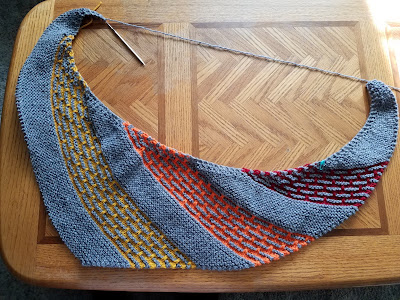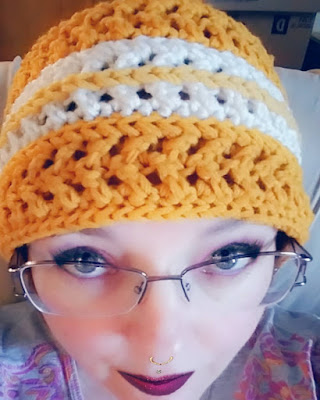My dear friend Suzanne is a self-proclaimed "chicken gal" and suburbanite-of-necessity who longs to return to her farmgirl days living in the country with a yard full of chickens.
What better way to celebrate her upcoming birthday than sending an Emotional Support Chicken for her to hug and hold while she dreams her sweet farmgirl dreams?
The Emotional Support Chicken by Annette Corsino is just a downright fun pattern to knit, and I think it looks best when executed in tweedy-ish yarn colorways that are reminiscent of the feathers of real chickens. When I saw the lovely marled colorways of KnitPal Cotton to the Core, I just knew they would produce some lovely chickens well worth adding to any metaphorical flock. For this hen, I'm using Caramel Brown as color A and Fresh Peach as color B.
This yarn is on the lighter side for being labeled as a worsted weight - definitely much lighter than the stuff that Red Heart labels as worsted weight. In my opinion, it's closer to being DK weight. I'm still using the needle size specified in the pattern, though, so we'll see how big this hen ends up being compared to the other ones I've knitted with Red Heart. 😅
I hope Suzanne loves her new chicken, and if she gives it a name, I will update this post to let all y'all know what it is! 💜🐔💜
I'm pretty sure that Suzanne's chicken is the first one of these that I've managed to sew together according to the way the pattern designer intended. Yay!


















































